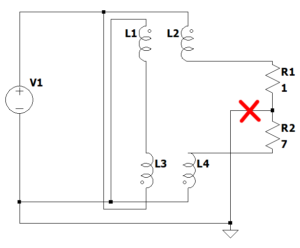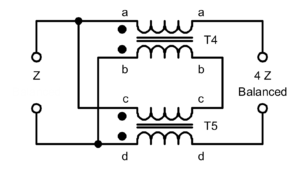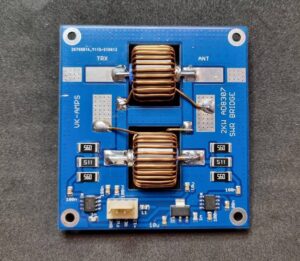A simple transformer model of the Guanella 1:4 balun discussed a simple model for the operation of the device, but a model that is too simple for most RF baluns. Notwithstanding that, it does expose some interesting issues that are not only valid at lower frequencies, but will also be manifest in an RF balun.
Isolated load
Consider the effect of breaking the connection at the red X, so that we now have what is often referred to as an “isolated load”. Continue reading A simple transformer model of the Guanella 1:4 balun – some further observations








